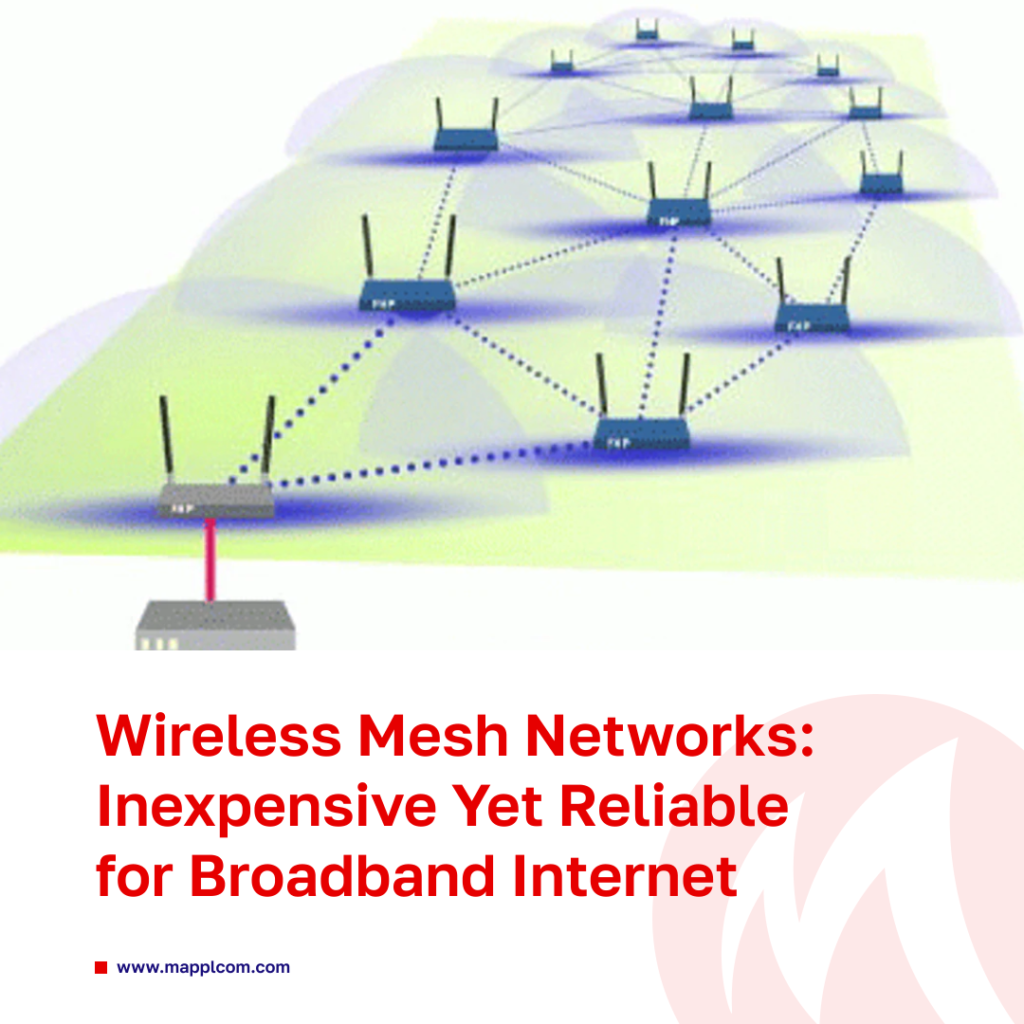Wireless Mesh Networks: Inexpensive Yet Reliable Solution for Broadband Internet

Due to wireless communication of nodes wireless mesh networks base on them technically can be used for data transmitting through them.
Our modern everyday routine would be under a serious threat with no online connectivity in a way we have it now. With these regards, the need for reliable and uninterruptible internet connection is a critical one nowadays, but it luckily can be solved by wired fiber broadband connection. The highest disadvantage here is a limited number of locations you can use it (mainly 2: your workplace and home), which lets you rely on much weaker mobile networks where provider most of the time struggles to overcome network throttling by service providers, or traffic congestion. Therefore, Wireless Mesh Networks are seen as an escape here as this solution can provide clients with network in any location without wired connection required. And moreover, they are pretty cheap!
The reason why you never take classic wireless broadband connection or internet with you is that they are not literally wireless. Instead, they connect to so-called fixed-line network by a router which has a constraint in its coverage zone. As for mesh networks, we do not experience the same issues – they represent a chain of interconnected nodes which act as radio transmitters and communicate to one another, thus, sending signals and delivering data through each other. They are not that costly to be set up and the same network can connect to a great number of these nodes.
What is also worth mentioning is that these separate components are smart enough in identifying problems with signal or any type of failures and are capable of restructuring the way the communicate to overcome these difficulties and achieve the highest level of signal possible. Technically, the whole chain of nodes still starts with a single fixed-line connected router then transmitting signal further and further from the starting point, which makes the solution applicable for different locations and zones, from shopping malls to some city areas. Shift to Wireless Mesh Networks won’t lead to any drastic change for end-users as this tool applies the commonly used 802.11a, g, and b Wi-Fi standards. Another factors of potential cost-reduction is an expected decrease in using wired materials, no administrators needed anymore for setting configurations and no additional workforce for installation process itself.

